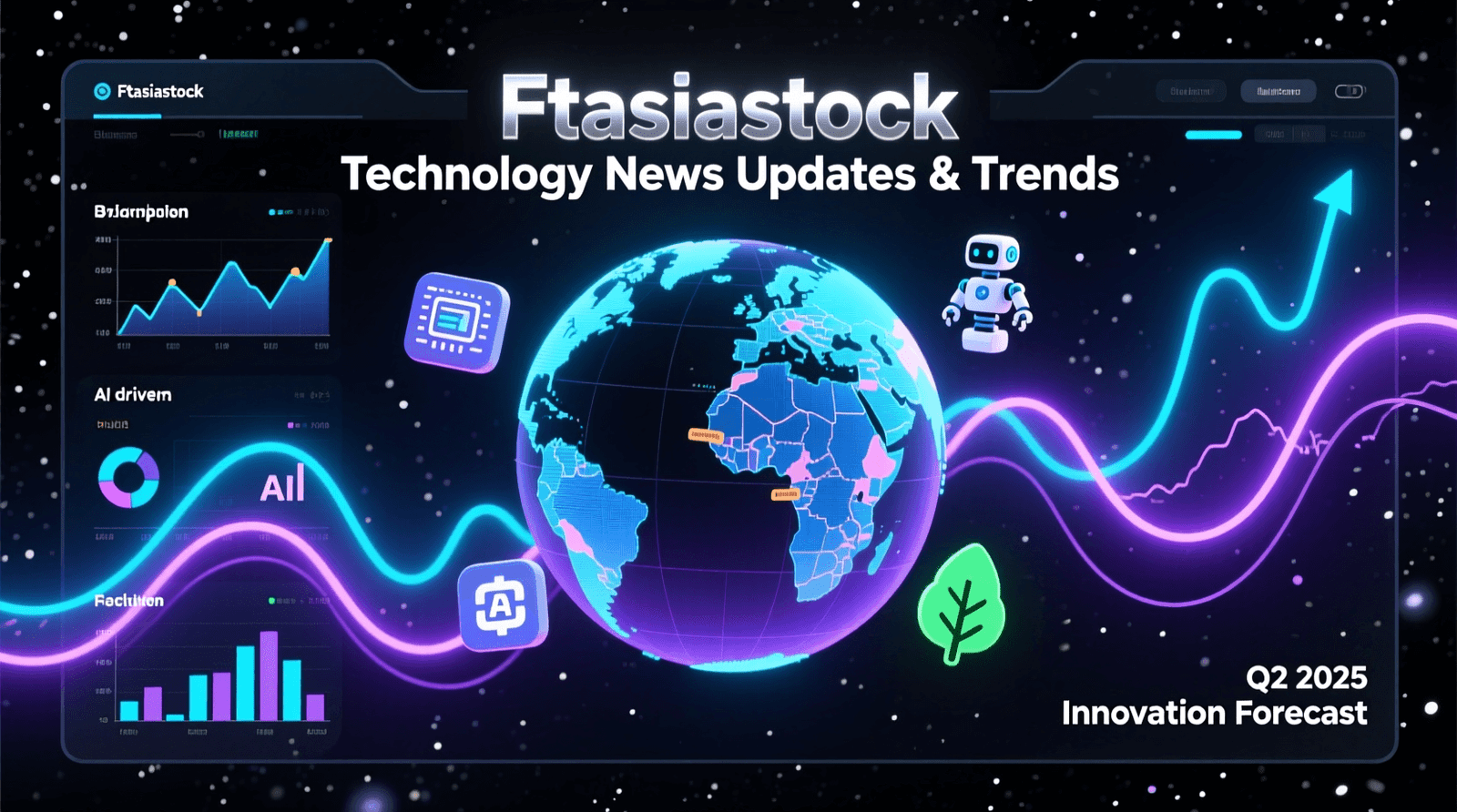What’s Happening in the Tech World?
In recent years, the question “Are tech companies in trouble?” has shifted from speculation to real concern. From mass layoffs and declining revenues to regulatory crackdowns and global supply chain issues, the challenges facing the tech industry are piling up.
At first glance, it may seem like the giants—Apple, Meta, Google—are still thriving. But a deeper look reveals a story of stagnation, pivoting priorities, and a growing uncertainty that’s shaking the foundation of Silicon Valley and beyond.
This article will explore the current tech landscape through shocking trends and seven core reasons you should care, whether you’re an investor, tech worker, or simply someone navigating the digital age.
Let’s dive into the first major trend shaping the industry today.
The Rise and Plateau of the Tech Industry
Explosive Growth from 2010 to 2020
The 2010s saw unprecedented growth in tech. Startups became unicorns. Social platforms exploded. Cloud services, mobile apps, and eCommerce redefined modern life. Companies like Uber, Airbnb, and Netflix grew from disruptors to global leaders.
Key Highlights:
- Global tech market value peaked over $9 trillion in 2021.
- SaaS platforms like Zoom and Slack became household names.
- Tech jobs were considered the gold standard for high salaries and remote flexibility.
Pandemic Boom and the Aftermath
The pandemic acted as a rocket booster for tech. Companies digitized overnight. Remote work, streaming, and online shopping surged. Stock prices soared.
However, by late 2022, the industry began facing headwinds:
- Overhiring led to bloated teams.
- Demand normalized post-pandemic.
- Inflation and interest rates impacted growth stocks.
Now, we’re seeing the after-effects of that boom—and they aren’t pretty.
1. Declining Revenues Across Major Firms
Apple, Google, and Amazon’s Q Earnings
While these giants still generate billions, many reported YoY (year-over-year) declines in critical areas:
- Apple’s iPhone sales fell due to economic slowdowns in China and India.
- Google’s ad revenue dropped as marketing budgets shrank.
- Amazon faced decreased online sales and increased operational costs.
SaaS Companies Facing Slower Growth
SaaS companies like Zoom, Salesforce, and Shopify reported significant revenue slowdowns. The issue? Market saturation and customer churn. Many B2B clients are scaling back due to tighter budgets.
Tech revenue isn’t vanishing—it’s just not growing at the meteoric pace investors got used to.
2. Mass Layoffs and Hiring Freezes
Meta, Twitter, and Salesforce Job Cuts
Between 2022 and 2024, tech companies laid off more than 500,000 workers globally. Some key names:
- Meta cut 21,000+ jobs to reduce costs and refocus on AI.
- Twitter/X saw nearly 80% of staff eliminated under Elon Musk.
- Salesforce laid off 10% of its workforce as part of restructuring.
The Impact on Tech Workers and Communities
These cuts don’t just impact those laid off. They affect entire local economies, from housing markets in tech hubs to the mental health of overworked remaining staff.
3. Regulatory Pressure and Antitrust Lawsuits
U.S. and EU Cracking Down on Big Tech
From Washington D.C. to Brussels, regulators are cracking the whip:
- Google faces multiple antitrust suits around its ad dominance.
- Amazon is under fire for marketplace manipulation.
- Apple faces scrutiny over its App Store policies.
Privacy, AI, and Content Moderation Conflicts
New laws like the EU’s Digital Services Act and AI Act force companies to comply with strict transparency and privacy rules. This adds costs and slows product rollouts.
4. Investor Confidence Is Shifting
VC Funding Trends Are Cooling
Venture capital (VC) used to flow like water into tech startups. Not anymore. According to Crunchbase, global VC funding in 2023 dropped by over 30% compared to the previous year. Investors are now:
- Demanding profitability over growth.
- Prioritizing capital-efficient models.
- Pulling out of risky sectors like crypto and metaverse.
Even once-hyped companies are now struggling to close Series B or C rounds unless they show immediate ROI potential.
Tech Stocks Facing Volatility
Tech stocks that soared during the pandemic are now coming back to earth. Nasdaq has seen wild swings, with even well-established players like NVIDIA, Tesla, and Amazon affected. This has a direct effect on:
- Retirement portfolios.
- Startup valuations.
- Mergers and acquisitions activity.
Investors want results, not promises—and that’s shaking up the game.

5. Innovation Fatigue and Consumer Saturation
The Slow Death of Smartphones and Laptops
The latest iPhone or MacBook just isn’t exciting anymore. Consumer fatigue is real:
- Hardware improvements are incremental, not revolutionary.
- Users are keeping devices longer due to economic constraints.
- Tablets, wearables, and smart home devices have plateaued.
This stagnation makes it harder for even the biggest brands to drive demand.
What’s (Not) Next in Consumer Tech
Where’s the next big thing? AR/VR hasn’t broken through despite heavy investment by Meta and Apple. The Metaverse has underwhelmed. Even 5G, once hailed as revolutionary, hasn’t delivered meaningful change to the average user.
Without a major leap forward, tech risks falling into a cycle of updates without innovation.
6. Geopolitical Risks and Supply Chain Chaos
U.S.–China Tech Tensions
The tech cold war between the U.S. and China has escalated:
- TikTok faces bans and scrutiny over data privacy.
- Huawei and ZTE are blacklisted in many Western countries.
- Semiconductor access is being restricted due to national security concerns.
This tension impacts global collaboration, hiring, and market expansion strategies.
Semiconductor and Hardware Disruptions
From Taiwan’s chip factories to U.S. fabs like Intel and TSMC, supply chains are fragile. Ongoing issues include:
- Delayed chip deliveries.
- Limited access to rare earth materials.
- Logistics disruptions from wars and pandemics.
Tech companies relying on just-in-time production are now shifting to just-in-case models, increasing costs.
7. AI Disruption: Blessing or Curse?
AI Replacing Tech Jobs
Ironically, AI—once considered a tool to support tech workers—is now replacing them. Chatbots, generative AI, and automation are:
- Replacing entry-level coding and customer service roles.
- Reshaping UX/UI, writing, and digital marketing.
- Forcing massive reskilling initiatives within firms.
Even Google reportedly paused hiring for some departments in favor of AI integration.
Opportunities in Automation and New Markets
Still, AI is opening doors too:
- Healthcare tech, legal tech, and edtech are thriving with AI applications.
- Startups focused on AI ethics, prompt engineering, and data labeling are growing.
- Smart firms are retraining instead of laying off.
The disruption is real—but it’s also a window for new leaders to emerge.

What Does This Mean for Tech Employees?
If you’re in tech, this moment is both nerve-wracking and empowering. Yes, jobs are being cut, and yes, salaries may stagnate—but there’s more:
- Freelancing and contracting are on the rise.
- Remote roles are still in demand, especially for DevOps, AI, and cybersecurity.
- Companies are paying for retraining instead of severance in some cases.
Your ability to adapt will determine your future.
How Startups Are Adapting to the New Normal
Startups are no longer chasing hyper-growth. They’re:
- Prioritizing sustainability.
- Focusing on product-market fit over vanity metrics.
- Avoiding over-hiring by using fractional teams.
The downturn is separating the truly innovative from the inflated.
Opportunities in the Downturn
Despite all the doom and gloom, there’s hope. History shows us:
- Amazon and Google were built during downturns.
- Recessions often force creative pivots and better business models.
- Niche markets—like green tech, climate AI, and quantum computing—are thriving.
Now’s the time to build quietly while others panic.
FAQs
1. Are tech companies still hiring in 2025?
Yes, though selectively. Roles in AI, cybersecurity, DevOps, and data analytics are still in high demand.
2. Is the tech industry in a bubble?
Parts of it were—especially during the pandemic. The current correction is more of a realignment than a complete burst.
3. Will AI take over most tech jobs?
Not most, but many. Repetitive and entry-level roles are being automated. The key is to upskill in areas AI can’t replicate—like strategy and complex problem-solving.
4. Are tech stocks safe to invest in now?
Depends on your risk tolerance. Blue-chip stocks like Apple and Microsoft remain strong, but speculative tech is risky right now.
5. Why are so many tech companies laying off workers?
Over-hiring during the pandemic, slowing revenue, and pressure to cut costs have forced companies to lay off staff.
6. What should recent tech graduates do?
Build a portfolio, learn emerging tools (like AI or low-code), and network aggressively. Opportunities are there—you just have to work harder to find them.
Conclusion:
So, are tech companies in trouble?
Yes—and no.
They’re certainly under pressure, facing more scrutiny and uncertainty than ever. But the real story is one of transformation, not collapse.
The giants may be wobbling, but the next wave of tech innovation is bubbling just beneath the surface. It’s a moment to reassess, recalibrate, and rebuild smarter.
If you’re an employee, investor, or entrepreneur, now’s the time to stay informed, stay flexible, and lean into change. The future may not look like the past—but it’s far from over.





2 thoughts on “Are Tech Companies in Trouble? Shocking Trends + 7 Reasons You Should Care”
Comments are closed.